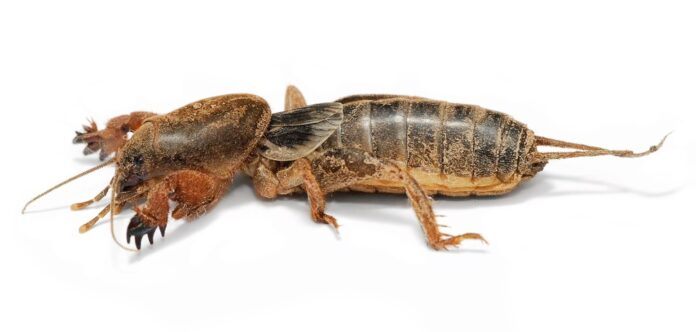Annuals
Say “Hello” to the heat! By now your warm season annuals should be planted and even blooming in many cases. Night temperatures have now turned warm as well, and annuals could use a boost of a water-soluble fertilizer to keep up with their rapid growth rates. Some annuals need to be deadheaded to keep them blooming, so watch for flowers that have lots of spent blooms, but aren’t setting new blooms. Removing the spent flowers will make them rebloom. Be on the lookout for spider mites who love dry, hot weather and aphids who love tender new growth. Look for the beneficial insects, as well (like lady bugs), and allow them to do their job of controlling aphids. High temperatures will play a role in when and which pesticides can be used. Many pesticides will have a top range of temperatures in which they are safe to use before becoming volatile and dangerous to the applicator and/or plants. At this time of year prevention of diseases is your best bet. Ensure good air circulation, avoid overhead watering, and water early in the day. Check irrigation frequently for problems or dry spots. High temperatures make for a small window of time for plants to go without water. Weeds will compete for water, space, and nutrients. Be sure to keep them pulled as much as possible.
Turf
Plan to bag as little of the grass clippings as you can. Returning clippings to the lawn also returns nutrients to it. Grass is mostly made up of water, and it will decompose quickly. If you need to dethatch the lawn, mow it afterward to remove any debris and water thoroughly. Mowers should be set at a higher mowing height than they were for spring mowing. Mow 1/3 of the height of grass to keep it less stressed and healthy. Remember to vary your mowing patterns, and do not blow debris into the street as this is a violation of storm drain management practices that City of Columbia employees must now follow. Watch your turf for signs of dry areas caused by irrigation heads not overlapping properly or broken heads. Mole crickets can be a problem, particularly in sandy soils. Watch for quarter-sized holes in the lawn and patterns of dying turf. Mole crickets can quickly cause large areas of turf to die. If you suspect mole crickets, contact Forestry & Beautification for help and information on how to test for mole crickets. Be on the lookout for signs of disease, such as scorched-looking areas.
Perennials
Perennials should all be out of dormancy by now. Replace any that didn’t over winter. Now is a good time to evaluate your landscaped areas. While annuals are great for color spots, the use of perennials will save money in the long run. Concentrate annual color at entry points to the parks, but be sure to work in perennials overall. If there are places that are difficult to maintain or mow, consider using perennials as an alternative to mulch or turf. Perennials can be used effectively for hillside plantings or in areas where deer and rabbits have eaten annuals. Because many perennials can be divided later, you can plant one area with perennials with the intent to plant other areas from divisions of the starter bed. Perennials are also useful for attracting beneficial insects to the landscaping. These will help control “bad” bugs that can be problematic to the rest of the landscape. Be on the lookout for aphids and spider mites. Avoid overhead watering to prevent fungal diseases like powdery mildew. Pull weeds to keep them from competing for water, space, and nutrients.
Roses
Water deeply and infrequently to keep fungal diseases to a minimum. Avoid excessive fertilization. It produces soft, succulent growth favored by pests. Deadheading the flowers will encourage rebloom, but it is not recommended for newly planted roses. Be watchful of aphids, spider mites, thrips, and Japanese Beetles. Horticultural soaps can be used to control these pests. Pull weeds to avoid competition for water, nutrients, and space.
Shrubs
Continue to water recently planted shrubs, avoiding overhead water. If you applied slow-release fertilizer in the spring, you should not need to feed them yet. Little or no pruning should be done during hot temperatures. Only azaleas that have finished blooming and didn’t get pruned last month should be pruned now. Hydrangeas, Rose of Sharon, Abelias, native azaleas, Gardenias, Chinese Indigo, and other summer bloomers should be coming into their glory this month. Watch for aphids, scale, spider mites, and Japanese Beetles on shrubs. Particularly watch gardenias for white flies. Good air circulation will help control this pest of gardenias. Heavy infestations can kill gardenias. Fire blight can show up in some shrubs. Leaves will look brown and scorched, and hang down from the stem, but not fall off. Quickly remove infested shrubs and destroy them. You cannot treat this disease with fungicide; only try to prevent its spread to healthy plant specimens. Be careful that you do not spread this disease through your contact of hands or tools to healthy plants.
Trees
Water recently planted trees thoroughly and deeply as they become particularly vulnerable during high temperatures. Palm trees can be planted now. Fertilize Palm trees monthly as they are heavy feeders. Palms will benefit from monthly applications of Epsom salts and iron. Older trees will get enough fertilizer from turf grass applications of fertilizer. Only prune broken or damaged limbs. Leyland Cypresses can become infested with bag worms. Remove as many of these as possible by handpicking. Older varieties of crape myrtle may become diseased with powdery mildew. Apply fungicide as needed, and keep good air circulation as much as possible.





